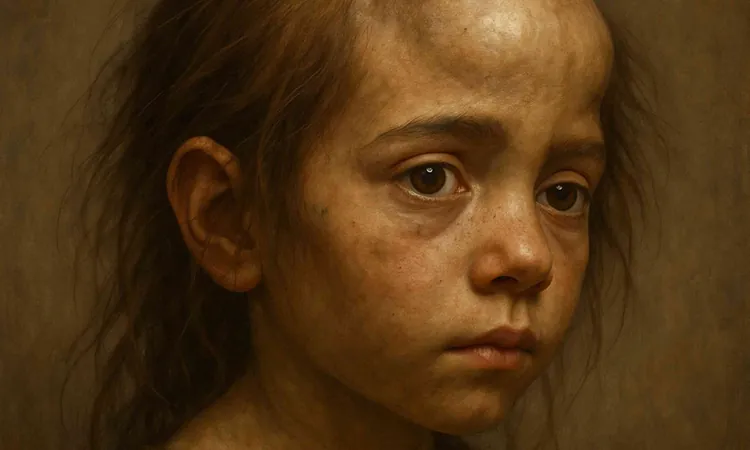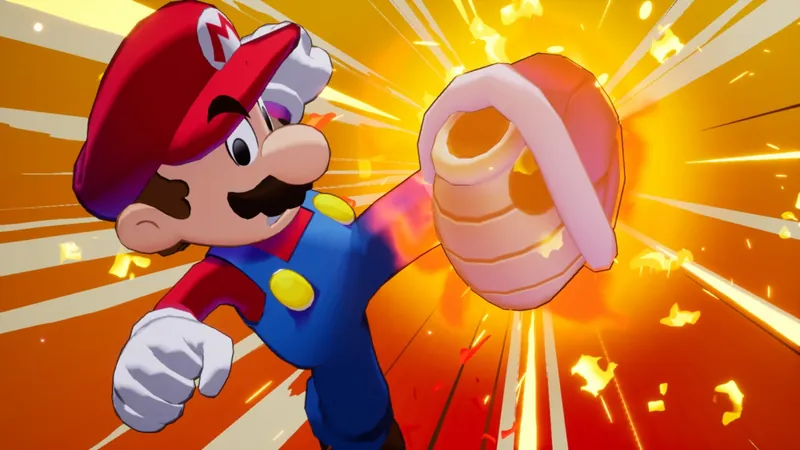
Meet Little Benjamina: The Ancient Face of Human Empathy
2025-06-28
Author: Ming
Unveiling a 500,000-Year-Old Mystery
Buried deep in Spain’s Atapuerca Mountains, the remarkably preserved cranium of a young girl named Benjamina has surfaced after lying hidden for over half a million years. This discovery is shaking the foundations of what we believed about the origins of human empathy.
A Glimpse into Benjamina's Life
Discovered by the talented team led by Juan Luis Arsuaga from the Complutense University of Madrid, Benjamina was cataloged as Cranium 14. This nearly complete skull belonged to a Homo heidelbergensis girl, estimated to be between ten and twelve years old. Remarkably, her brain volume measured around 1,200 cm³—just shy of modern pre-teens.
Rare Medical Conditions and Their Implications
Upon studying her remains, researchers found that Benjamina had a rare condition called lambdoid synostosis, where part of her skull's sutures fused before birth. This abnormality, affecting only about 2% of craniosynostosis cases, would have shaped her skull into a noticeable asymmetrical dome. Without modern surgical intervention, such conditions can lead to various complications, ranging from headaches to cognitive delays.
Evidence of Care in Prehistoric Society
Fascinatingly, despite her medical challenges, Benjamina thrived long enough to lose baby teeth and develop permanent molars. This survival suggests that she received significant care from her community—an early indication of empathy and social cohesiveness in hunter-gatherer societies. In a related find, a six-year-old Neanderthal also survived severe impairments thanks to the support of their community.
Why Name Her Benjamina?
The name 'Benjamina,' derived from Hebrew meaning 'the youngest' or 'beloved child,' reflects both her age and the compassion she likely experienced throughout her life. This practice of naming fossils humanizes these ancient beings, transforming them from mere data points into recognizable individuals within their social fabric.
The Broader Impact on Science and Society
Benjamina's case not only challenges our understanding of early human social structures but also deepens the medical record of craniosynostosis, as it stands as the oldest documented case of this condition. This could aid researchers in tracing genetic evolution while reminding today's medical practitioners that untreated children can lead fulfilling lives.
An Inspiration for Future Generations
The story of Little Benjamina serves as a powerful reminder of early community care, shaping our understanding of cooperative behaviors that would later fuel advancements in human culture. From the depths of ancient history, this remarkable find paves the way for future intrigue in both paleoanthropology and modern medicine.





 Brasil (PT)
Brasil (PT)
 Canada (EN)
Canada (EN)
 Chile (ES)
Chile (ES)
 Česko (CS)
Česko (CS)
 대한민국 (KO)
대한민국 (KO)
 España (ES)
España (ES)
 France (FR)
France (FR)
 Hong Kong (EN)
Hong Kong (EN)
 Italia (IT)
Italia (IT)
 日本 (JA)
日本 (JA)
 Magyarország (HU)
Magyarország (HU)
 Norge (NO)
Norge (NO)
 Polska (PL)
Polska (PL)
 Schweiz (DE)
Schweiz (DE)
 Singapore (EN)
Singapore (EN)
 Sverige (SV)
Sverige (SV)
 Suomi (FI)
Suomi (FI)
 Türkiye (TR)
Türkiye (TR)
 الإمارات العربية المتحدة (AR)
الإمارات العربية المتحدة (AR)